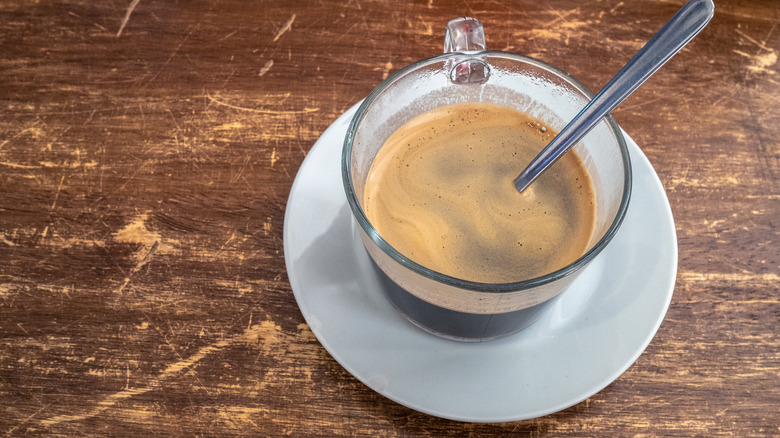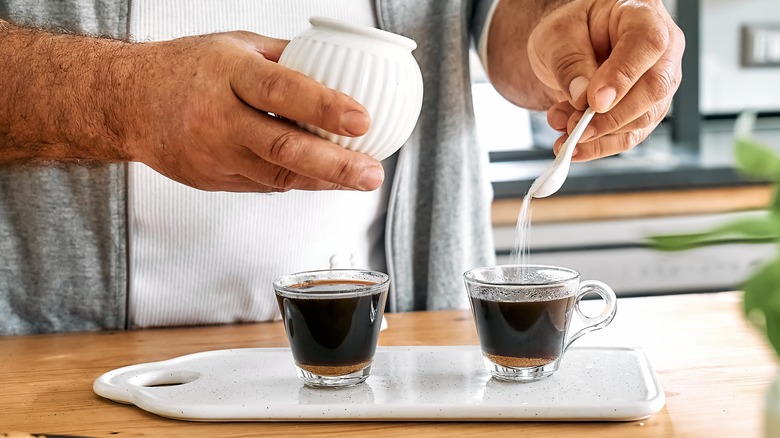The Difference Between Cuban Coffee And Typical Espresso
A Cuban coffee and a typical Italian espresso might look pretty similar at first glance. They're both strong brews that deliver a powerful caffeine kick, and both are served in small cups. And a café Cubano, also known as a cafecito, is made in a similar way to espresso, using finely ground dark-roast beans. But there is a key difference between the two, which sets them apart, both visually and in terms of taste.
With Cuban coffee, sweet demerara sugar is added to the cup before the brewing process. Typically brewed in a cafetera moka (a stovetop espresso maker), the first few drops of thick, strong coffee are whisked with the sugar in a cup to create a pale, foamy paste, called espuma, or espumita. When the remainder of the coffee is added into the cup, the espuma rises to the top, creating the signature, caramel-colored foam that tops a Cuban coffee.
With espresso, sugar can be served alongside the coffee, and is added to the drink after it's been brewed, if so desired. Though unlike Cuban coffee, where the sugar is already in the coffee, espresso can also be drunk as it comes, without adding any extra sweetness. Espresso does not have the espuma you'd find atop a Cuban coffee, but rather a thinner, silky layer of foam known as crema, created by the pressure of an espresso machine, which disappears into the coffee within a few minutes.
The sugar method gives Cuban coffee a different flavor to espresso
The addition of sugar before Cuban coffee is brewed gives it a unique flavor, which is strong, rich, and deliciously sweet. The high heat of the coffee hydrolyzes the sucrose, which makes the resulting coffee taste different than if the sugar was added at the end of the process when the drink is cooler. In a nutshell, this helps the sugar break down and fully infuse into the drink.
The choice of sugar is also important. Demerara, a raw brown sugar that has been through minimal processing, adds flavors of molasses and toffee, meaning the finished coffee has an almost caramel-like taste. The espuma, or foamy layer on top, also adds to the sweetness as the drink hits the lips.
The taste of an espresso, by comparison, tends to vary depending on where the beans have originated from. Flavors can range from floral or fruity to smoky — and even spicy. Without the addition of sugar, it is, of course, less sweet than Cuban coffee, and can even taste slightly bitter or acidic to some. The crema on top is usually a bit more bitter than the drink beneath. But an espresso can be sweetened by adding sugar to the finished beverage, according to the drinker's personal taste. Whereas with a Cuban coffee, the sweetness is part of the package.


